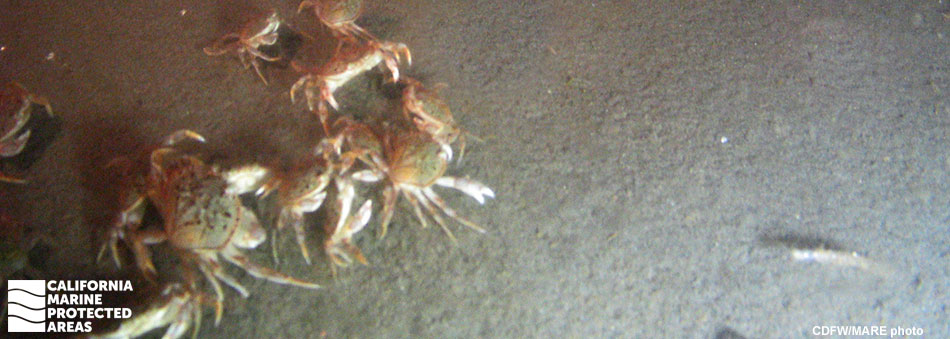
Overview
Located northwest of Crescent City, Point St. George Reef Offshore State Marine Conservation Area (SMCA) sits approximately eight miles offshore with no direct coastal access. Ranging in depth from 175 to 400 feet, this marine protected area (MPA) protects slightly more than nine square miles of deep, soft and rocky seafloor habitats, including the only offshore banks north of Point Reyes.
Composed predominately of soft, sandy areas interspersed with rocky reefs, this MPA protects many species from take including flatfish, lingcod, rockfish, anemones, sea whips, sun stars, sea pens, and sea cucumbers. Other species commonly found here include salmon and Dungeness crab, which may be fished commercially and recreationally in the MPA. The nearest landmark lies just outside of Point St. George Reef SMCA at Northwest Seal Rock, home to the historic Saint George Reef lighthouse.
Regulations
It is unlawful to injure, damage, take, or possess any living, geological, or cultural marine resource, EXCEPT:
Recreational and commercial take of salmon by trolling or troll fishing gear, and Dungeness crab by trap is allowed. Includes take exemptions for the following tribes:
- Elk Valley Rancheria
- Tolowa Dee-Ni' Nation
California Code of Regulations Title 14, Section 632(b)(2)(opens in new tab)
Quick Facts
MPA size: 9.52 square miles
Shoreline span: 3.4 miles
Depth range: 176 to 399 feet
Habitat composition*:
- Sand: 9.14 square miles
- Rock: 0.38 square miles
*Habitat calculations are based on three-dimensional area and may exceed the total MPA area listed above.